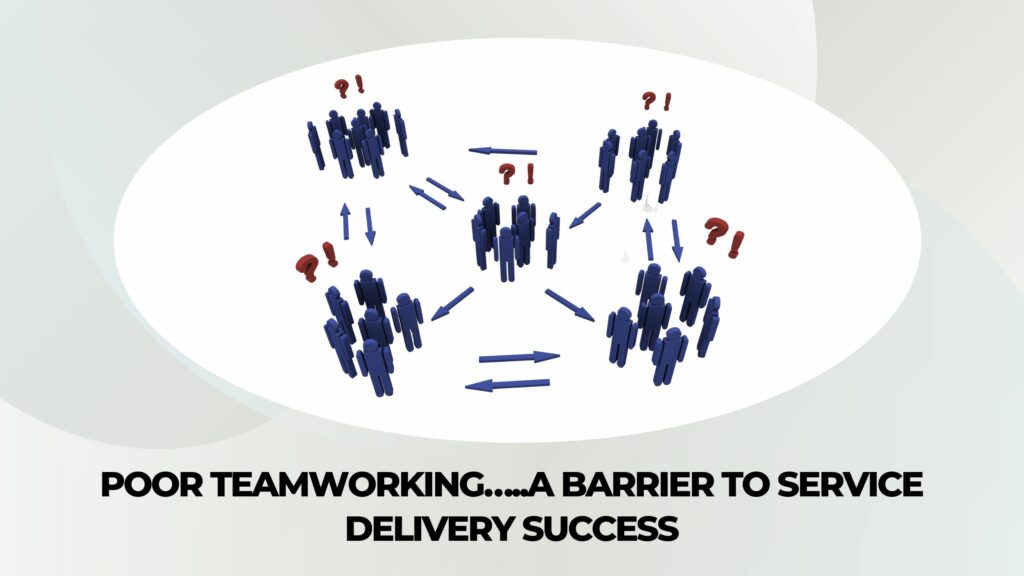Recently, I was thinking about why so many teams are disjointed in the way that they operate. I interact quite a bit with corporate teams and the common thread running across a critical mass of these teams, is that they function more like “groups of individuals” than “cohesive units.” I have not been seeing the evidence of bonding through shared values, a clear vision for teamworking, or a working formula for resolving conflict issues.
What escapes my understanding, is why the malfunctions are allowed to persist. Everyone, (including the team leaders), complains about the poor state of teamworking, yet, everyone yields to the pain. It’s only when the pain becomes unbearable that someone does something about it. Generally, by this time, so much damage has been done to the psychology of the team, that the remediation process becomes a long and winding road.
If a team is really serious about improving its functioning, focussing on four important levers can jumpstart the journey back to good team health.
If we look closely at motivated teams, we’ll see that work is evenly distributed, which helps to avoid the common blunder of disproportionately burdening some team members with the lion’s share of the workload.
Motivational energy is fuel for a well-functioning team. A motivated team that is driven by positive energy and productive habits, can side-step many of the common challenges that grind teams to a halt. If we look closely at motivated teams, we’ll see that work is evenly distributed, which helps to avoid the common blunder of disproportionately burdening some team members with the lion’s share of the workload. Also noticeable is the absence of dysfunctional conflict. These teams have a formula for addressing thorny issues at the “bud” level, the stage at which it’s easiest to extinguish discontent and dis-ease.
A motivated team that has liberated itself from internal obstructions, now has available energy to focus on executing its role and delivering great customer outcomes. Conversely, a team suffering from low energy disorder, becomes kryptonite to great service delivery.
A motivated team that has liberated itself from internal obstructions, now has available energy to focus on executing its role and delivering great customer outcomes.
When I interact with team members in various departments, across multiple businesses, who say, “the information that I’m sharing is off-the-record, please don’t quote me,” I know that something is amiss in their work environments. In other words, they inhabit a workspace where they feel psychologically unsafe. Team leaders, managers and supervisors need to minimize the psychodrama that is so rampant in business cultures. You’ll agree with me, no doubt, when I say that a dysfunctional climate is detrimental to the mental health of employees.
With all of the leadership development training programs, conferences and academic programs around and over-subscribed, why are dystopian environments still flourishing? At this point, I don’t have to remind you about how all of this internal drama impacts the ability of a team to execute great service delivery.
Team cohesion flourishes when team members trust each other, as well as the team leader.
There’s something very energizing about a team that is built on compatibility, where team members are well-matched in attitude, behaviours, skills, open-mindedness and freedom of expression. It’s like a marriage that is built to last. I believe that as the world of business becomes more and more diversity-centric, a key skill that team leaders, managers and supervisors will need to master, is the ability to build highly compatible teams. More specifically, the ability to go beyond just building teams that are only skills-compatible, to building internal communities, where the workings of diversity, inclusivity and engagement, are harmonized. Now, that’s a tall order.
All well-oiled teams are cohesive. Team cohesion flourishes when team members trust each other, as well as the team leader. When trust is absent, cohesion does not even exit the starting block. A cohesive team is a connected hub and connectedness within a team and across departmental teams, builds the collaboration that enables the customer’s journey to unfold without hiccups.
A cohesive team is a connected hub and connectedness within a team and across departmental teams, builds the collaboration that enables the customer’s journey to unfold without hiccups.
Today’s leaders are being tested to their limits in the area of team building. They are being called upon to ensure that teams are solid enough to withstand the rigours of executing business strategy, whilst being flexible enough to support employee and customer needs, that have been evolving at an unprecedented speed.
Successful teamworking supports the delivery of customer success. This is an inescapable fact that says pointedly to leaders, that they should win at teamworking, if they want to have a shot at winning with customers.
It now is left to be seen, which leaders will heed the call.

